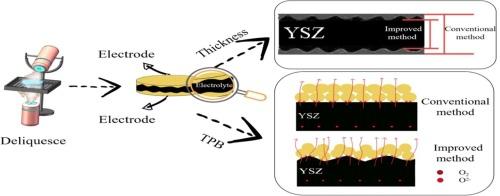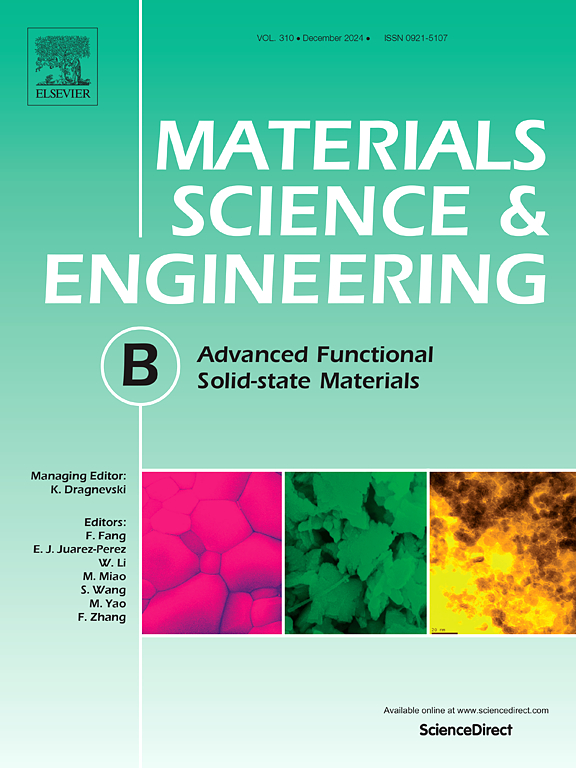有效调节 NaOH 消解率,制备用于固体氧化物电池应用的钇稳定氧化锆自支撑电解质
IF 3.9
3区 材料科学
Q2 MATERIALS SCIENCE, MULTIDISCIPLINARY
引用次数: 0
摘要
高工作温度对固体氧化物电池(SOC)的稳定性和安全性提出了重大挑战,而用于制备电解质支撑燃料电池薄膜的干压方法会产生更光滑但更厚的薄膜,这可能会损害电池性能。因此,本文介绍了一种创新的干压技术,用于制造由 NaOH/YSZ/NaOH 组成的三层结构。通过仔细控制 NaOH 的潮解速率,可以高效、温和地去除 NaOH 支持层,从而形成 YSZ 电解质薄膜。三维光学轮廓仪的结果显示,YSZ 薄膜的平均粗糙度分别增加到 2.65 微米和 2.85 微米。在 850 °C 下,在 H2 和纯 CO2 条件下,电池的功率密度和电流密度分别为 0.47 W∙cm-2 和 1.64 A∙cm-2 。这些结果表明,用这种新方法制备的薄膜厚度薄,粗糙度好,电化学性能高。本文章由计算机程序翻译,如有差异,请以英文原文为准。

Effectively regulate NaOH deliquescence rate to prepare yttria-stabilized zirconia self-supported electrolytes for solid oxide cell applications
The high working temperature poses significant challenges to the stability, safety of solid oxide cells (SOCs), and the dry pressing method used to prepare films for electrolyte-supported fuel cells yields smoother but thicker films, which can impair cell performance. Thus, the paper introduces an innovative dry pressing technique for creating a tri-layer structure consisting of NaOH/YSZ/NaOH. By carefully controlling the deliquescence rate of NaOH, the NaOH support layer can be removed efficiently and gently, resulting in a YSZ electrolyte film. The results from the 3D optical profiler show that the average roughness of the YSZ film increased to 2.65 µm and 2.85 µm on each side. The power density and current density of the cell are 0.47 W∙cm−2 and 1.64 A∙cm−2 at 850 °C under H2 and pure CO2, respectively. These results indicate that the films produced by this novel method are thin, exhibiting favorable roughness and demonstrating high electrochemical performance.
求助全文
通过发布文献求助,成功后即可免费获取论文全文。
去求助
来源期刊

Materials Science and Engineering: B
工程技术-材料科学:综合
CiteScore
5.60
自引率
2.80%
发文量
481
审稿时长
3.5 months
期刊介绍:
The journal provides an international medium for the publication of theoretical and experimental studies and reviews related to the electronic, electrochemical, ionic, magnetic, optical, and biosensing properties of solid state materials in bulk, thin film and particulate forms. Papers dealing with synthesis, processing, characterization, structure, physical properties and computational aspects of nano-crystalline, crystalline, amorphous and glassy forms of ceramics, semiconductors, layered insertion compounds, low-dimensional compounds and systems, fast-ion conductors, polymers and dielectrics are viewed as suitable for publication. Articles focused on nano-structured aspects of these advanced solid-state materials will also be considered suitable.
 求助内容:
求助内容: 应助结果提醒方式:
应助结果提醒方式:


